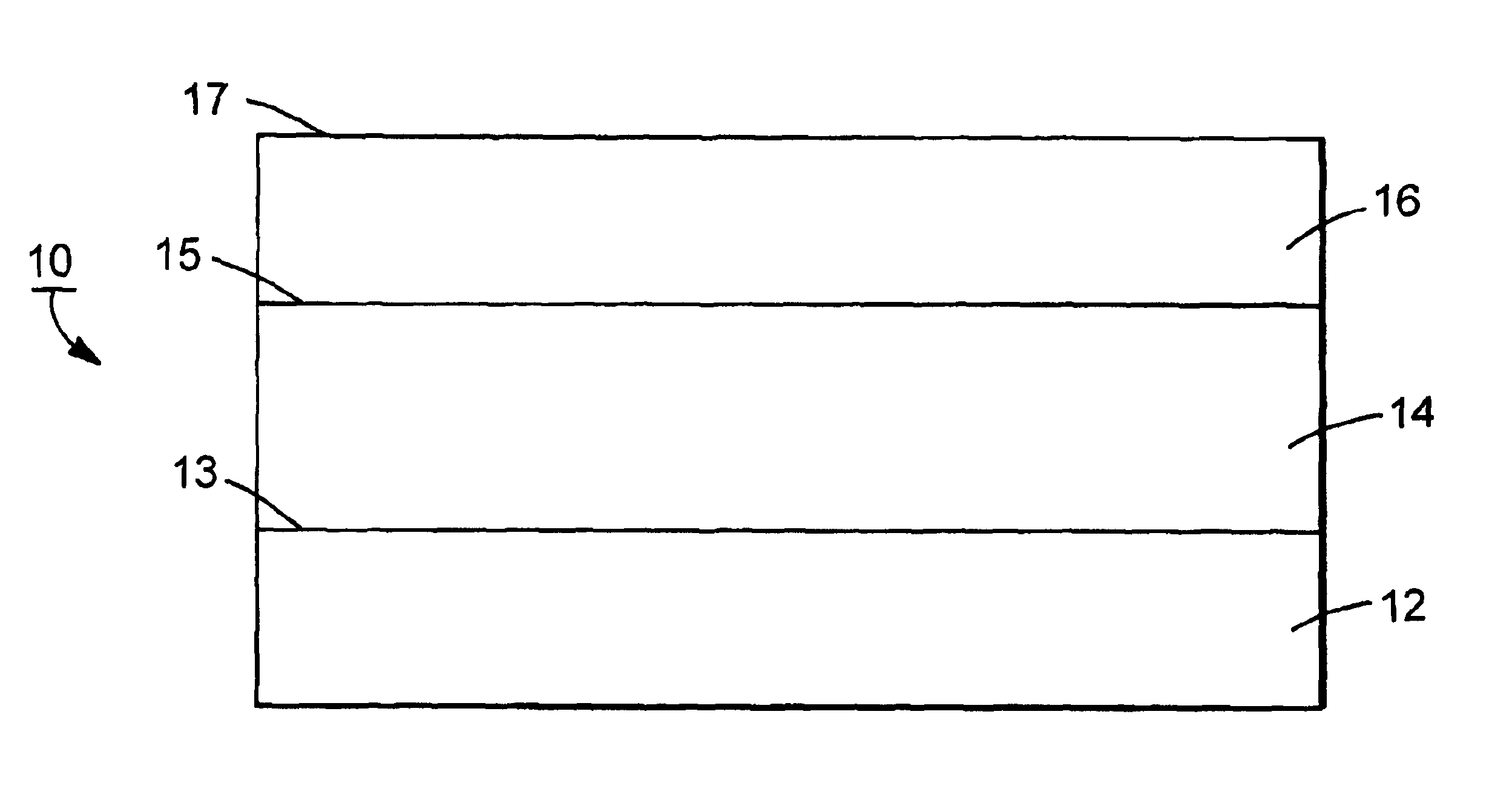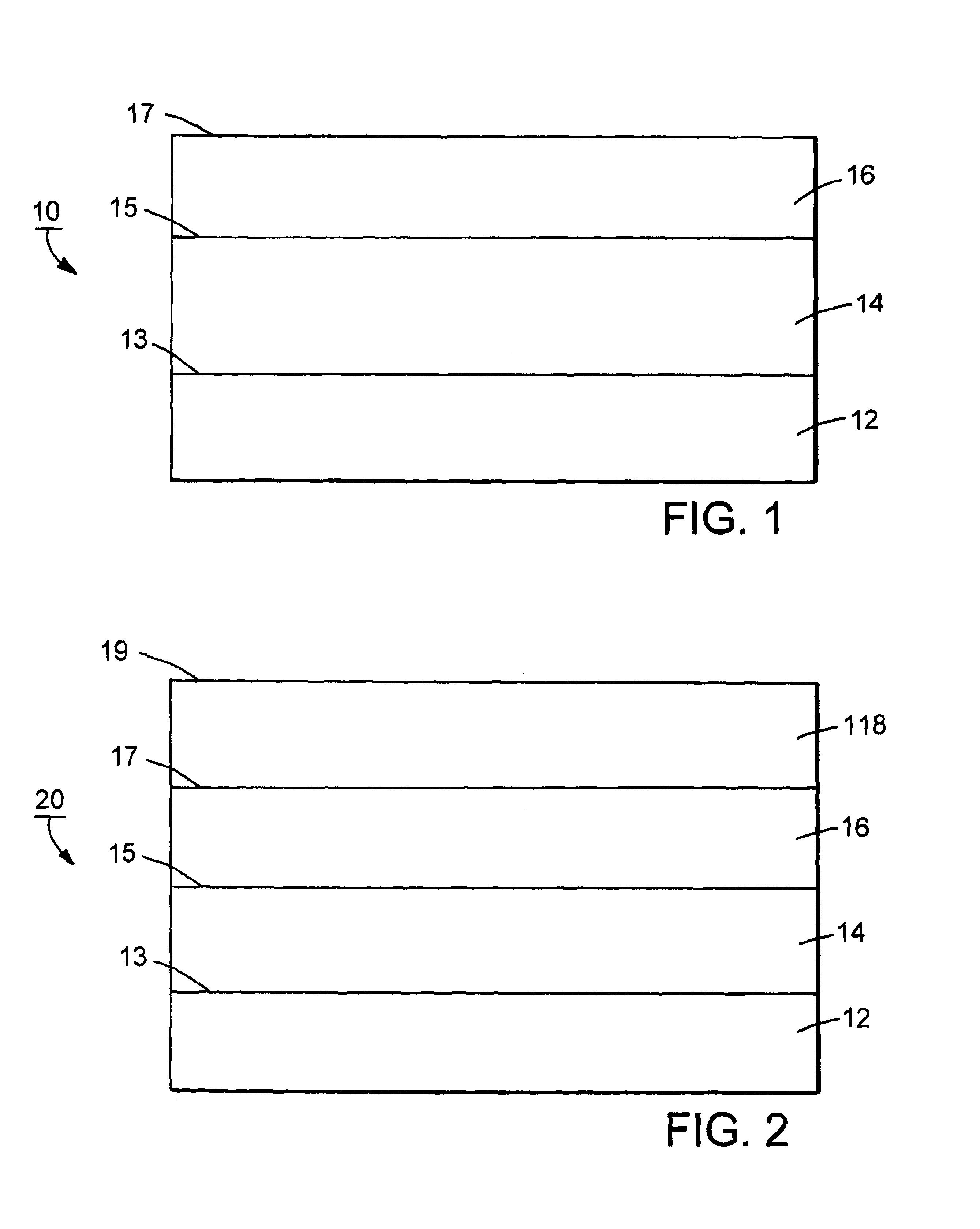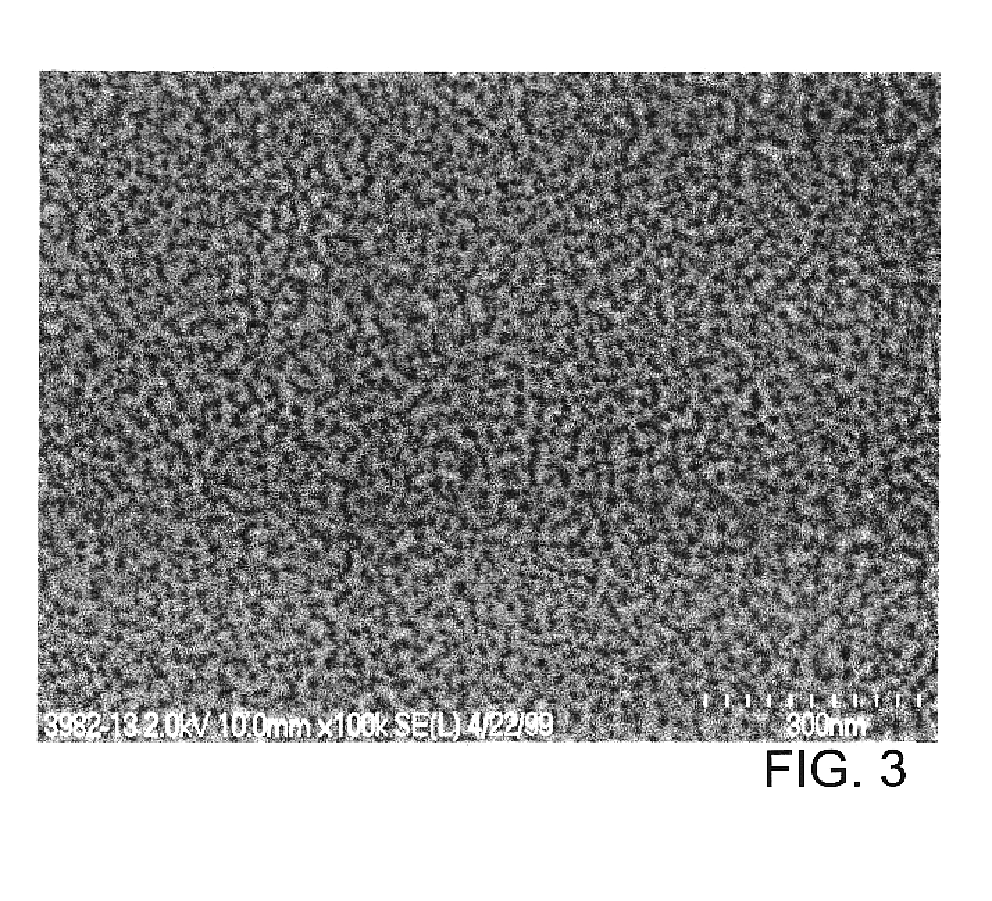Multi-layer articles and methods of making same
a technology of multi-layer articles and methods, applied in the direction of superconductor devices, condensed vapors, polycrystalline material growth, etc., can solve the problem of reducing the ability of the resulting multi-layer superconductor to exhibit certain superconducting properties, and achieve high critical current density, high quality, and high density
- Summary
- Abstract
- Description
- Claims
- Application Information
AI Technical Summary
Benefits of technology
Problems solved by technology
Method used
Image
Examples
example i
[0170]A precursor solution was prepared as follows. About 51.4 grams of Y(CH3CO2)3•4H2O were dissolved in about 514 grams of water. About 77.6 grams of Ba(CH3CO2)2 were dissolved in about 388 grams of water, and about 91 grams of Cu(CH3CO2)2•H2O were dissolved in about 1365 grams of water. These three solutions were then mixed together. About 243 grams of the resulting solution were mixed with about 10 milliliters of pure trifluoroacetic acid. This solution was dried under vacuum at about 60° C. until all solvents were removed and only a solid remained. The solid was then dissolved in methanol and diluted to a total volume of about 50 milliliters to form a precursor solution.
example ii
[0171]A multi-layer article was prepared as follows. The precursor solution prepared in Example I was spin coated onto a buffered substrate formed of CeO2 / YSZ / CeO2 / Ni.
[0172]The buffered substrate was prepared by rolling deformation of a nickel sample to greater than about 97% to form a tape. The tape was annealed at about 1000° C. for about an hour to form a well cube textured material. An about 30 nanometer thick layer of CeO2 was deposited onto the textured nickel surface at a rate of about one Angstrom per second using electron beam evaporation and a temperature of about 625° C. An about 300 nanometer thick layer of YSZ was deposited on the CeO2 layer at a rate of about 0.5 Angstroms per second using radio frequency sputtering at a temperature of about 725° C. An about 20 nanometer thick layer of CeO2 was deposited on the YSZ layer at a rate of about 0.7 Angstroms per second using radio frequency sputtering and a temperature of about 725° C. The buffered CeO2 / YSZ / CeO2 / Ni substrat...
example iii
[0177]A multi-layer article was prepared as follows. The unused portion of the CeO2 / YSZ / CeO2 / Ni buffered substrate prepared in Example II was held at about 900° C. for about one hour in a gas environment having a nominal total gas pressure of about 760 Torr of a forming gas (about four volume percent hydrogen in argon). The gas environment had a nominal oxygen gas pressure of from about 1×10−12 Torr to about 1×10−16 Torr. A precursor solution prepared as described in Example I was spin coated onto the conditioned surface of the CeO2 / YSZ / CeO2 / Ni buffered substrate, decomposed and further heated as described in Example II. The resulting YBa2Cu3O7-N layer had a critical current density of about 1.34×106 Amperes per square centimeter as determined by transport measurement at 77K in self field using a one microvolt per centimeter criterion.
PUM
| Property | Measurement | Unit |
|---|---|---|
| deposition temperature | aaaaa | aaaaa |
| deposition temperature | aaaaa | aaaaa |
| deposition temperature | aaaaa | aaaaa |
Abstract
Description
Claims
Application Information
 Login to View More
Login to View More - R&D
- Intellectual Property
- Life Sciences
- Materials
- Tech Scout
- Unparalleled Data Quality
- Higher Quality Content
- 60% Fewer Hallucinations
Browse by: Latest US Patents, China's latest patents, Technical Efficacy Thesaurus, Application Domain, Technology Topic, Popular Technical Reports.
© 2025 PatSnap. All rights reserved.Legal|Privacy policy|Modern Slavery Act Transparency Statement|Sitemap|About US| Contact US: help@patsnap.com



